Improving the Petrol Pump / Gas Station Operation and Making it More Efficient
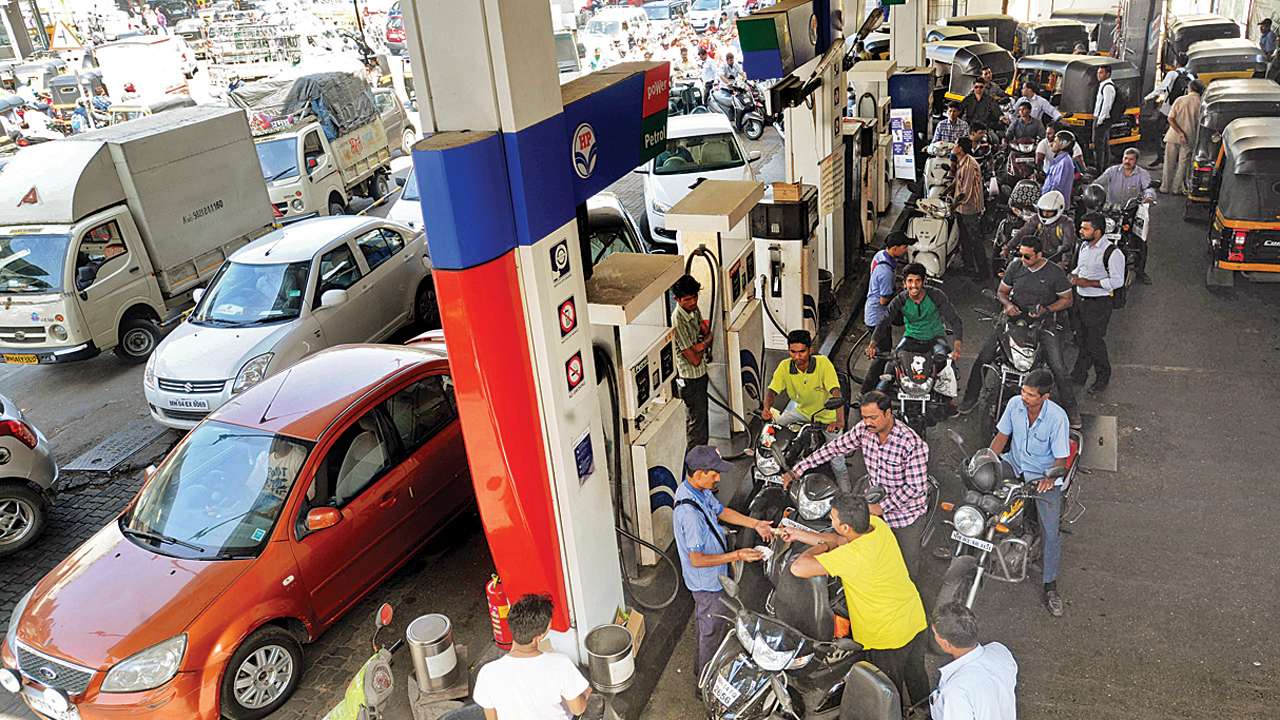
Why This Post?
Last month, when I was in India, I visited a petrol pump near my house. The petrol pumps or as anyone in the USA might say "Gas Stations" in India are different than the ones in the USA. In the USA, most of the gas stations are self-service, meaning you are supposed to pump the gas and pay for it by yourself. There are very few full-service gas stations where you pay slightly more price per gallon but gas station attendants do everything for you.
In India, it's the opposite situation. You have a petrol station attendant at every station who is responsible for opening a fuel tank, filling fuel, and accepting payment.
Fuel is a basic need. People need vehicular transportation for daily use and this is not something they can afford to ignore.
Anyway, the fuel station that I visited had a fairly large area, many filling stations, more employees, and too many vehicles waiting to get the fuel. However, things weren't moving as fast as anyone could imagine with these many resources. There was a lot of chaos, vehicles were disorganized, there was confusion about which vehicle gets the first turn, and oftentimes disputes about how much fuel to fill and the amount of price one was supposed to pay as per the earlier agreement. Also, once the fuel was filled, a lot of vehicles were stalling the traffic behind them instead of immediately moving out.
I thought maybe there is a better way to organize this system. The owner can save everybody's time, increase customer satisfaction, business, revenue and avoid any conflicts due to miscommunication between customers and petrol pump staff.
What Makes this Operation Inefficient and Causes Frustration for Customers?
When I was waiting to get my vehicle refueled, I spent several minutes just waiting under the intense sun during the early afternoon. I had a lot of time to think about things that I found were frustrating,
- Undisciplined drivers
- Inability to separate out vehicles by service or vehicle types
- Verbal communication - No written records for agreement
- Inconsistent entry-exit paths
- Inefficient use of fuelling booths
Undisciplined Drivers
I think it's a general problem that people are not disciplined in public settings. Even if there are guidelines and rules around conduct when one person breaks the rule, others are tempted to follow the same behavior, a situation results in chaos and eventually, nobody cares.
If fuel station owners could hire people just to organize customers in lines and help remaining vehicles to move to open fuel booths, that would streamline the process and eliminate the chaos when drivers force themselves in every available open position and everyone follows the suit. Eventually, no one knows where they are going which results in chaos and slows down the entire operation - No matter how big the fuel station is or how many employees it has.
In many cases, two-wheelers form two parallel lines where it makes sense to only form one for upcoming booths. If you have two booths next to each other, you can still have one line but whenever any booth opens up, they can call the next driver waiting in the line.
It's not easy to convince people to follow rules when everyone is essentially accustomed to not following them at all. But you can still get success by convincing them how following rules can ultimately benefit them. So you need to tell them how following rules is advantageous to you, and not to people enforcing them.
Typical Scene at Petrol Pumps
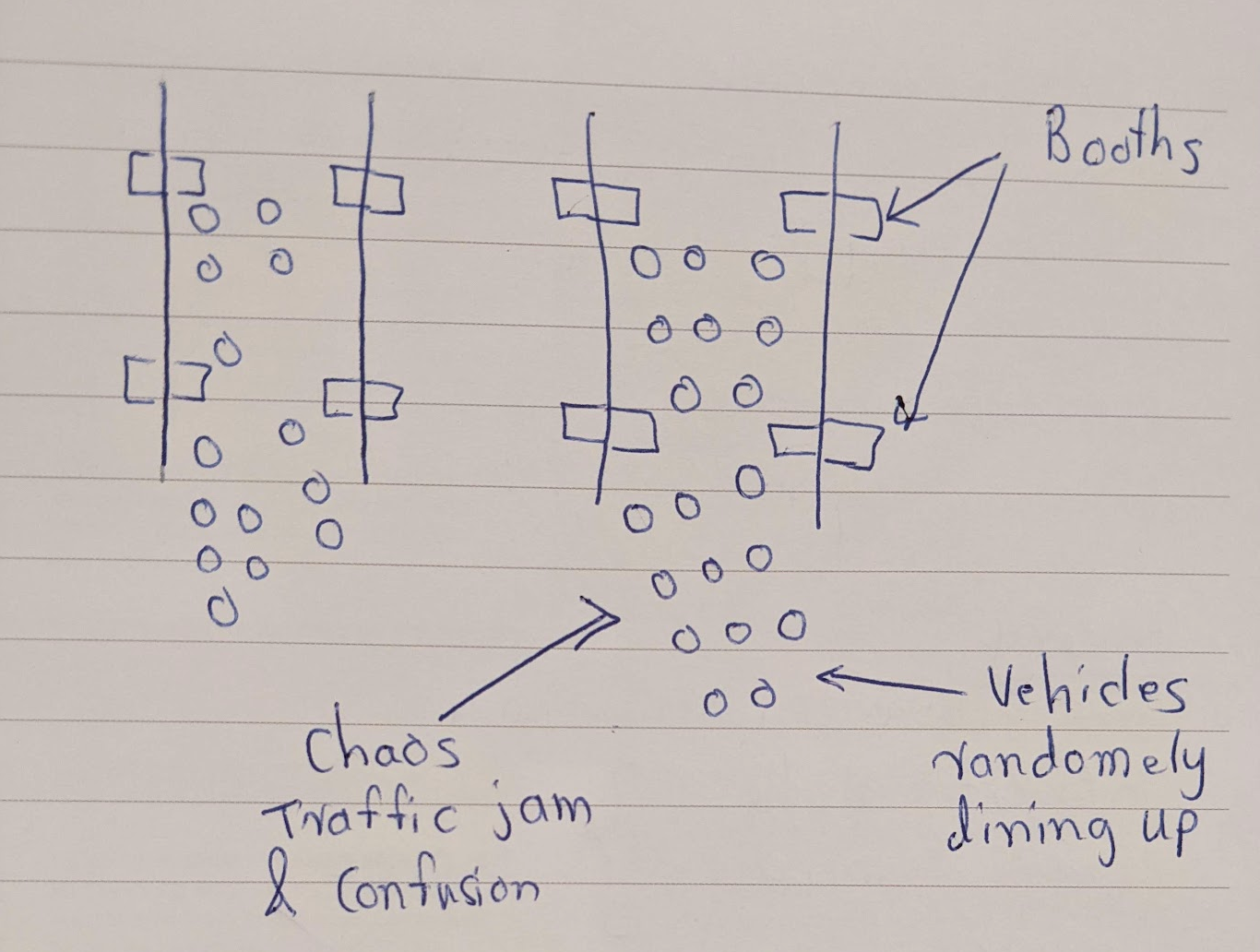
How it can be improved?
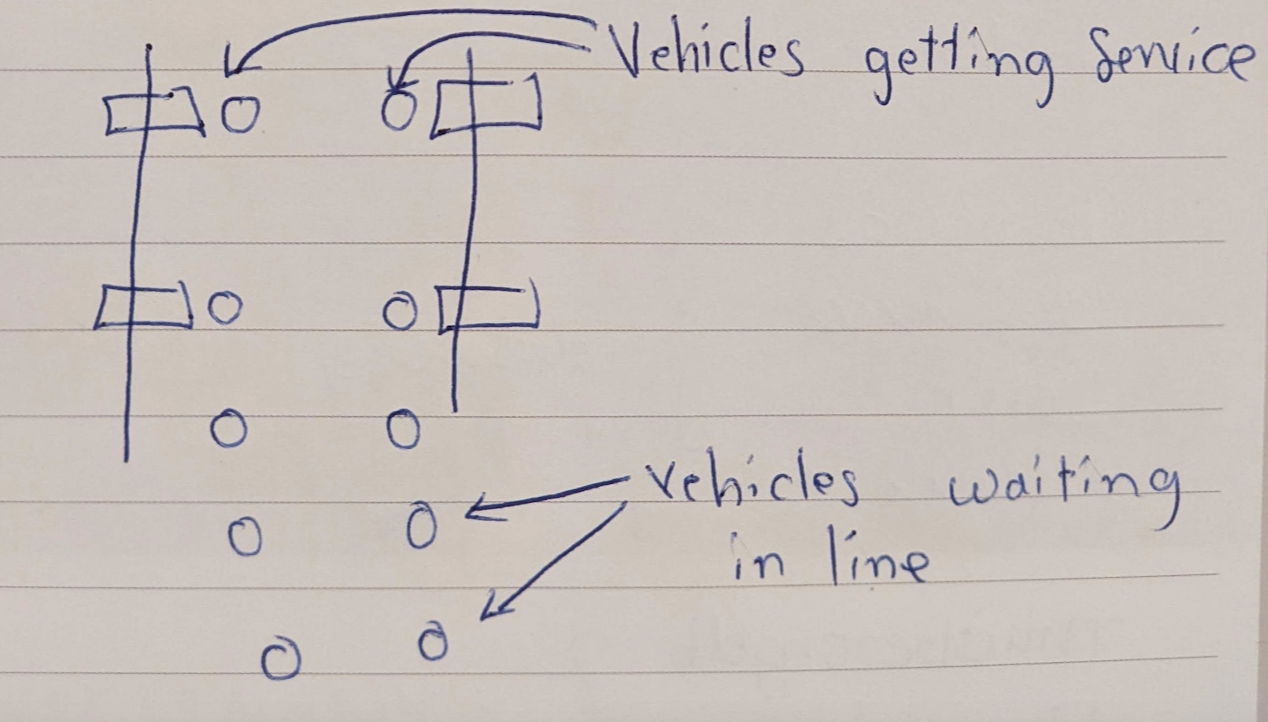
Inability to Separate Out Vehicles by Service or Vehicle types
Another source of slow operation is, the inability to separate out vehicles either by service, vehicle, or payment type. Roughly, vehicles can be divided along the following dimensions.
- Payment Method - Cash or a Card
Fuel station owners can divide customers by the type of method of payment. Card and e-payments are faster, ubiquitous, and preferable. However, there is still a sizeable number of customers in India who prefer to pay by cash. Owners can choose to divide up lines and categorize them by payment methods so that there is less overhead on employees accepting payments when they already know the means by which the current customer is going to pay.
2. Vehicle Type - 4-Wheelers vs. Regular Vehicles
This is a common practice to divide vehicles by their size. 4-wheelers used to be rare in India a few years ago, but with everybody buying cars nowadays, 30-35% capacity can be reserved for cars and trucks. The remaining capacity can go to small vehicles where they still make up a sizeable portion of the traffic in India.
Ultimately, this should be a data-driven decision. Observe the traffic for a few weeks and get solid data on the percentage of traffic that goes under the heavy category vs. the one under the regular category.
3. Fuel refilling type
Some people want to fill their vehicle tanks to full while others prefer to fill up fuel worth the fixed amount. It's faster for the latter category because customers can pay the fixed amount in the beginning, refuel it and go off. With the former, no one knows the exact amount before fuelling is done, so there is no way to pay in advance.
The petrol pump attendant has to fuel the vehicle, wait until the tank is full, and give the invoice to the customer who can decide to make the payment either by cash or a card. If cash, it tends to add more delay as attendants now have to gather extra change.
How can fuel stations group these customers?
Fule stations operators can make this process faster by grouping people by chosen categories. The bigger fuel stations have around 10-12 fueling booths and 30% can be reserved for bigger vehicles.
Motorcycles could be further divided into any two categories from the list below,
- Those paying by card vs. those paying by cash
- Those needing full refueling vs. those paying a fixed amount
How operators want to divide these vehicles depend on the percentage of traffic they receive. If customers are going to pay with a card and need fuel worth a specific amount, that's the fastest category and can be grouped in one line.
if customers are going to pay by cash and want to fully fill the tank, that's the slowest category and can be grouped into a separate line.
They can form one or two more lines with any of the following categories based on customer preferences and behavior,
- Those paying by card and need full refueling
- Those paying by cash and need a fixed amount of fuel
Tip: Operators are not going to know these numbers on the first day of operation. Maybe they can run operation for a few weeks and gather data on which days have most/least traffic, percentage of vehicle types, number of people paying by card vs. cash, and how many customers need full refueling vs. those needing fuel worth a fixed amount. Probably this behavior might also change based on which day of the month it is. For example, customers may have more cash at the beginning of the month and prefer full refueling while they are cash strapped at the end and might prefer paying by credit card for a fixed amount. Once you have this data, then decide what is the efficient way to divide customers into these categories
Basic Strategy for Categorizing Customers by Type
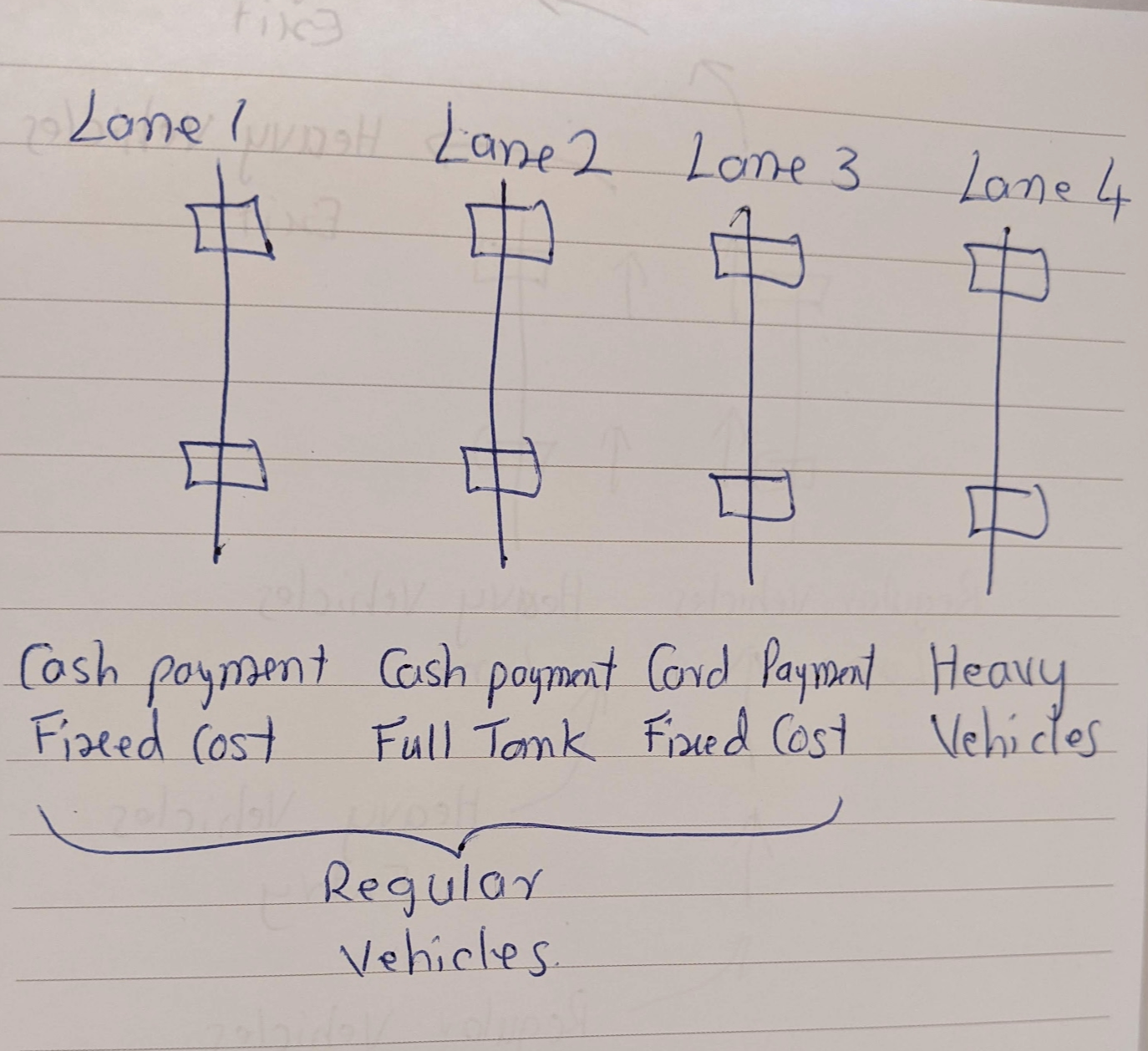
Verbal communication - No written records for agreement
The fuel station customer communication happens verbally and customers don't get a receipt until they refuel their vehicles. Sometimes there is lost communication about the method of payment, how much fuel they want, and whether it's a fixed amount of fuel or they want to fully fill the tanks.
I have seen people getting into arguments because they somehow thought they were in agreement with the booth attendant but there was a mismatch between what they assumed vs. what the attendant heard.
These situations can be avoided by providing written records and asking customers to verify them before the vehicle gets near the fueling booth. For example, if I say I need to purchase the fuel worth 300 Rupees and I am going to pay by card, the attendant can generate a receipt for this request and let me review it beforehand.
Inconsistent Entry-Exit Paths
Vehicles consistently entering and exiting from prohibited paths can cause traffic jams and delays. Sometimes operators have no idea where they want vehicles to enter or exit from. In order to streamline the process, attendants can enforce entry-exit paths to customers so that no two vehicles can come head-to-head.
Since bigger vehicles need more space, they can have separate entry-exit paths. Optionally, operators can also set up additional checkpoints at the exit to make sure customers paid for the fuel before getting out.
How Petrol Station Operators Can Streamline Entry-Exit Paths
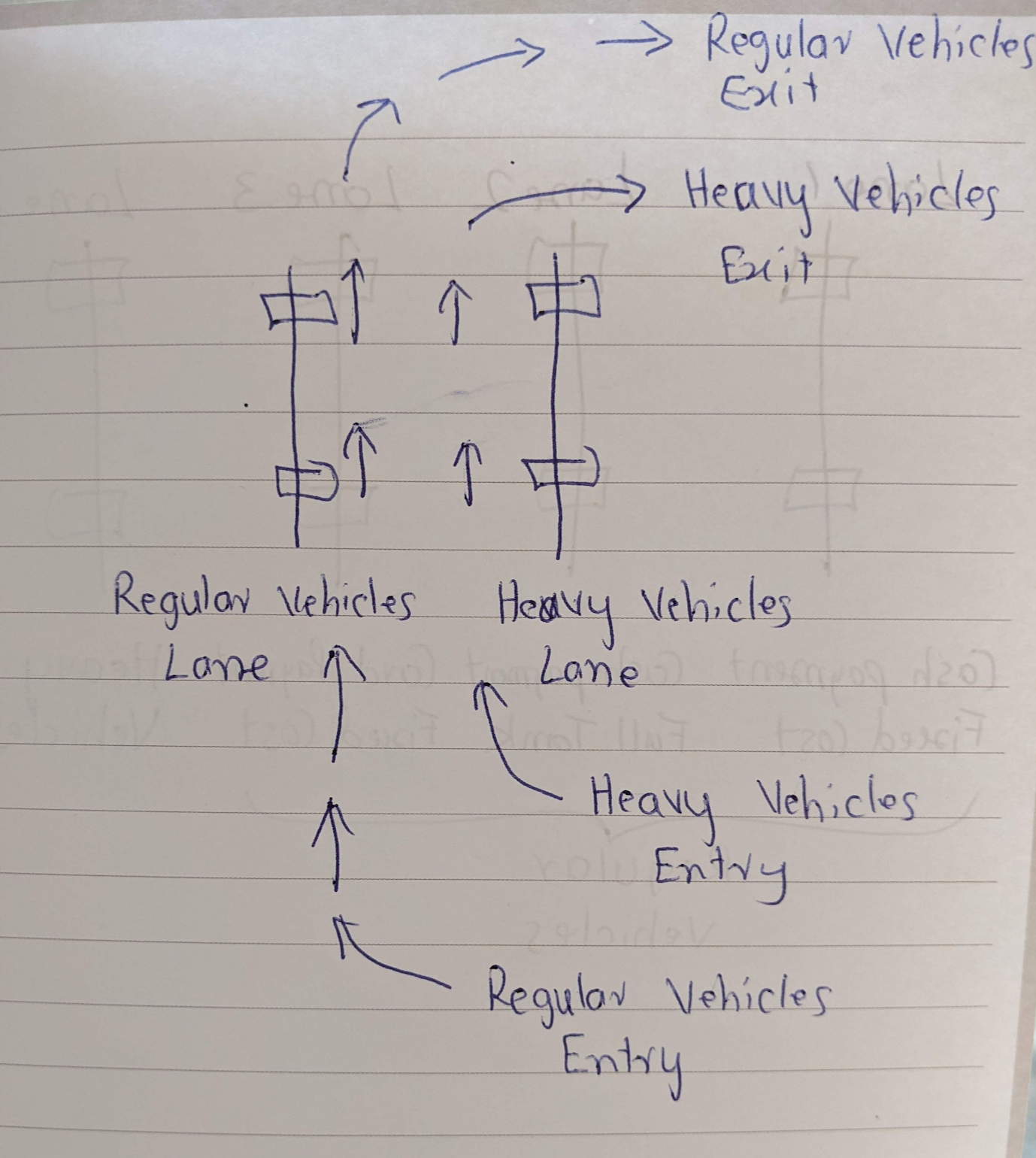
Inefficient use of fuelling booths
I have seen many cases where the fuel station has ample booths, but they are not utilized to their full potential. Customers struggling to force their vehicles into the smallest space available, forming multiple parallel lines instead of one, starvation of one booth while too much crowd at other booths exacerbate the problem.
In addition to separating vehicles out by service or vehicle types, attendants can also enforce discipline to customers to increase efficiency with the number of available booths with following guidelines,
- Forming a single line,
- Waiting until the next vehicle is done
- Getting out as soon as vehicle refueling is done
- Maintaining safe distance
- Getting into the correct line for what kind of service they want
I know it's easier said than done because customers may not like these policies to be enforced on them. However, instead of forcing them on customers, attendants can convince them of the long-term importance of these policies in terms of better customer experience.
They will understand forming a single line makes it move faster and avoids confusion about who gets next. Getting out as soon as you are done will benefit not just you while you're waiting but other vehicles behind you to help everyone move faster. Maintaining a safe distance will help them avoid collisions with other vehicles and subsequent confrontations.
Nice to Have Things
This was just a list of things that I think are essential for efficient petrol pump operation. However, there are many other nice to have things owners can add to their existing operation.
- Electrical Vehicles Charging Stations
With the increasing number of electrical vehicles, businesses can add charging stations. Starting small, they can add 4-charging stations. 2 for heavy vehicles and 2 for regular vehicles. Not to mention, if they get or can generate cheap electricity, the profit margins generated by these stations will be significant. If the number of electric vehicles grows in the future - Which it seems like happening, the operator won't be caught guard and can instead expand their existing operation to service the increased number of electric vehicles.
Tip: Owners can even open the restaurant in available real estate where people can enjoy the food while their vehicle is getting recharged. Those paying at charging stations can get extra discount in the restaurant and vice versa
2. The Shade for Customer
Waiting to refuel the vehicle in unforgiving Indian summers is no easy job. As India still has a significant number of two-wheelers, there is a significant portion of the population facing this issue on a daily basis at least 6 hours per day for most of the days in a year.
Owners can earn custom goodwill by providing a shade for vehicle owners waiting in line to get the fuel. The shades can also act as a channeling mechanism. Once the vehicle gets in the shade, they have to go in a straight line and there is no going here and there which lowers the traffic and clutter inside the fuel station.
3. Special Discount for Customers Using Cards and E-payment
Eventually, business owners want their customers to move fast. The faster the line moves, the more the generated revenue. Cards and e-payments offer the fastest way to pay for services.
Businesses can offer discounts and coupons to customers using electronic forms of payments and can even provide dedicated express lines for them. So even if customers may not pay using cards under these circumstances, they will be tempted to use these modes of payment given the incentives.
4. Offer Discounts During Slow Times
For anyone who has been to fuel stations in India, weekday evenings and weekends pull the maximum rush. Weekday mornings and afternoons are the slowest. Still, there are some customers who, despite having free time during slack hours choose to visit fuel stations during rush times.
In order to encourage more people to visit during slow times - which will generate more revenue and utilize available resources and dissuade as many people as possible to visit during the rush time - Which will reduce congestion and move vehicles faster, businesses can offer discounts for customers arriving during slow times.
How do you decide which are slow and fast times? Well, analyze the data over several weeks. Keep the tally of the number of customers visited per hour and create ranges for busy and slow times during weekdays and weekends.
5. Display Service Times for Each Lane
As we discussed in the point above, it is more efficient to categorize customers by their vehicle type, mode of payment, and what kind of service they want. Service time can be defined as the time between customers entering a line until they exited the area. Depending on the speed of operations, each lane will have a different service time. You can display service time for each lane and then customers can choose which line they want to be in.
It will automatically cause a fair distribution of customers and if everything goes well, the service times between these lanes will match. For example, if one line has a service time of 5 minutes and the other has 8 minutes, more and more customers will get into the first-line reducing the flow in the second. As time goes by, service time for the first line will go up and the one for the second line will come down. Eventually, they should come close if this pattern continues.
6. Free Air-filling Facility
As vehicles are coming out after filling the gas it's possible that they might need to fill the air too. Business owners can provide air-filling stations right next to fueling booths so that customers can avail this facility. Even better, they can provide this service free of cost if they have just refueled at the same place. The verification can be done by verifying the payment receipt.
Since customers don't have to pay anything, you can have just two air-filling stations - One for heavy vehicles and the other for regular vehicles.
Is This Too Much To Ask?
Of course, these decisions depend on many parameters and may not be easily available to all the business operators,
- How much space do they have to spare for additional facilities
- Monthly revenue and profit
- Location of operation
- Customer volume
- Owner's enthusiasm about growing the business
- Business debt.
Summary
I have been visiting petrol pumps since my teenage, but this thought of how to improve them never touched me. This article is my honest attempt at analyzing my pain points as a customer and what changes I would like to see to make it a tolerable experience. Maybe because I lived in Western countries for many years, but I dread every time I have to go to refuel at the gas stations in India. It's a chaotic environment, employees are everywhere, the owner is nowhere to be seen, and there is a constant dispute between customers and attendants.
I hope my suggestions make sense here - Not just for an efficient petrol pump operation, but also to grow the business. I have never owned a petrol pump, so not saying all the suggestions mentioned here make sense, but if owners could implement at least half of them, it will make customers' and eventually business owners' life much easier. It's not a zero-sum game. It's a win-win situation. When customers are happy, they are bound to come back for more. As India sees more and more petrol pumps opening, there is going to be stiff competition. And even if you could provide a slightly better experience than your competition, you're bound to win in the long term.


